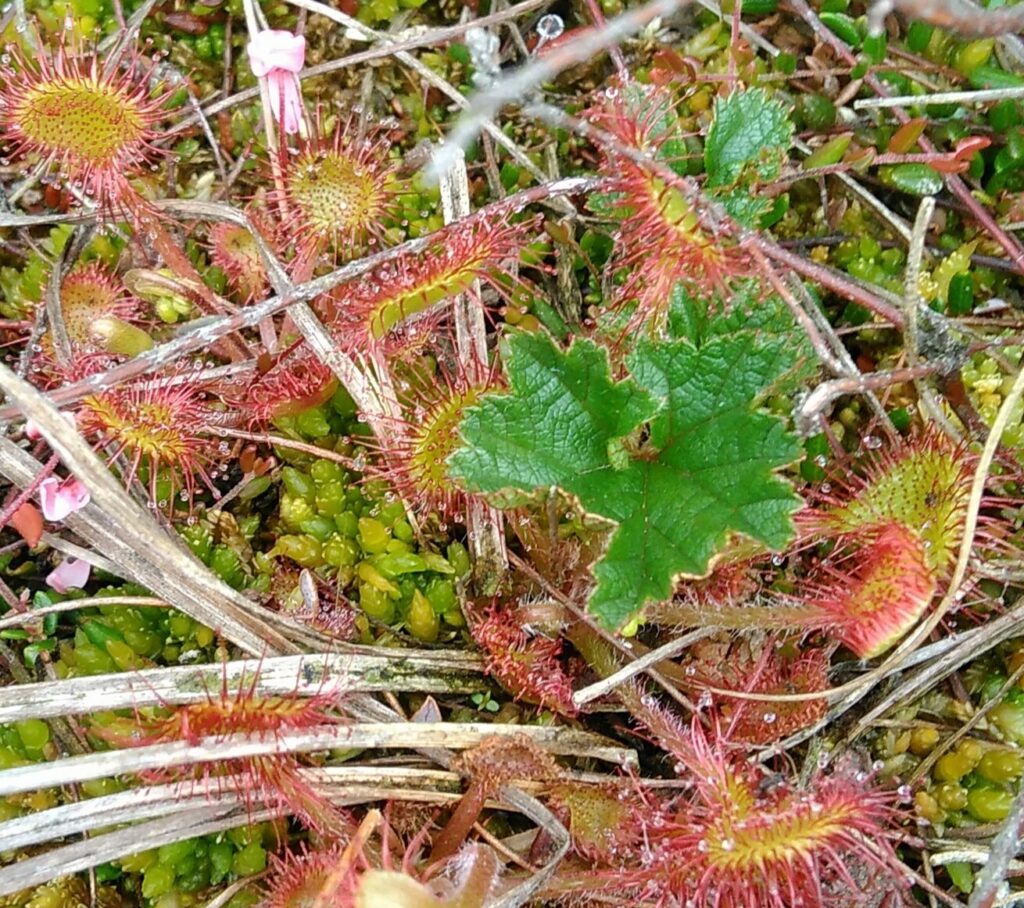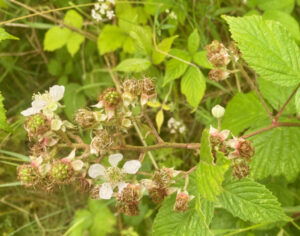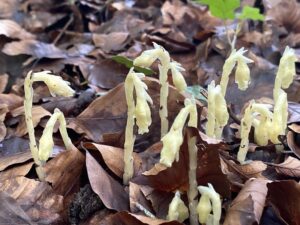2023 County Report for North-east Yorkshire
David Barlow
Although there are still some records to come in for 2023 both from IRecord and INaturalist we have entered some 3,800 odd records this year. Unlike some counties in the south we do suffer from a lack of recorders. Our main recorders are only enough to occupy a couple of cars at best.
This year marks the remarkable 50 year study of May Moss, Margaret Atherton studied it as part of her PhD 50 years ago. It's an upland blanket bog, a rare habitat on the North York Moors, which are dominated by dry heath. She set up monitoring transects, and discovered Cloudberry growing in one small central area. Bog Rosemary also grows abundantly - the only site in VC62, and an outlier on the distribution map. Botanical monitoring of the May Moss vegetation, and the Cloudberry & Bog Rosemary in particular, has continued for the past 50 years, led by Margaret, with some assistance from Forestry England, North York Moors National Park Authority and Place Yorkshire. The Cloudberry is struggling, with only a few small leaves remaining from the larger plants discovered by Margaret.


